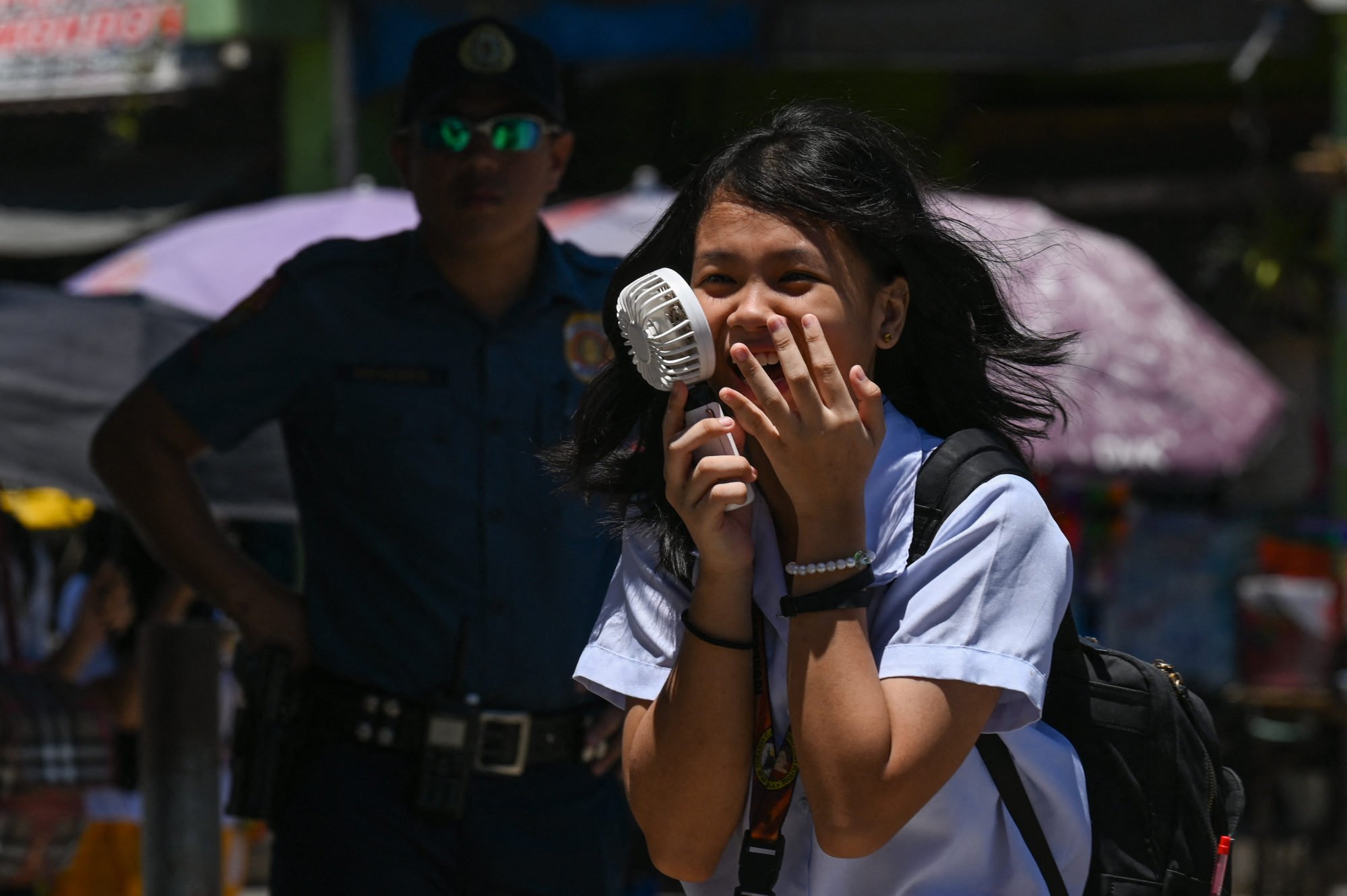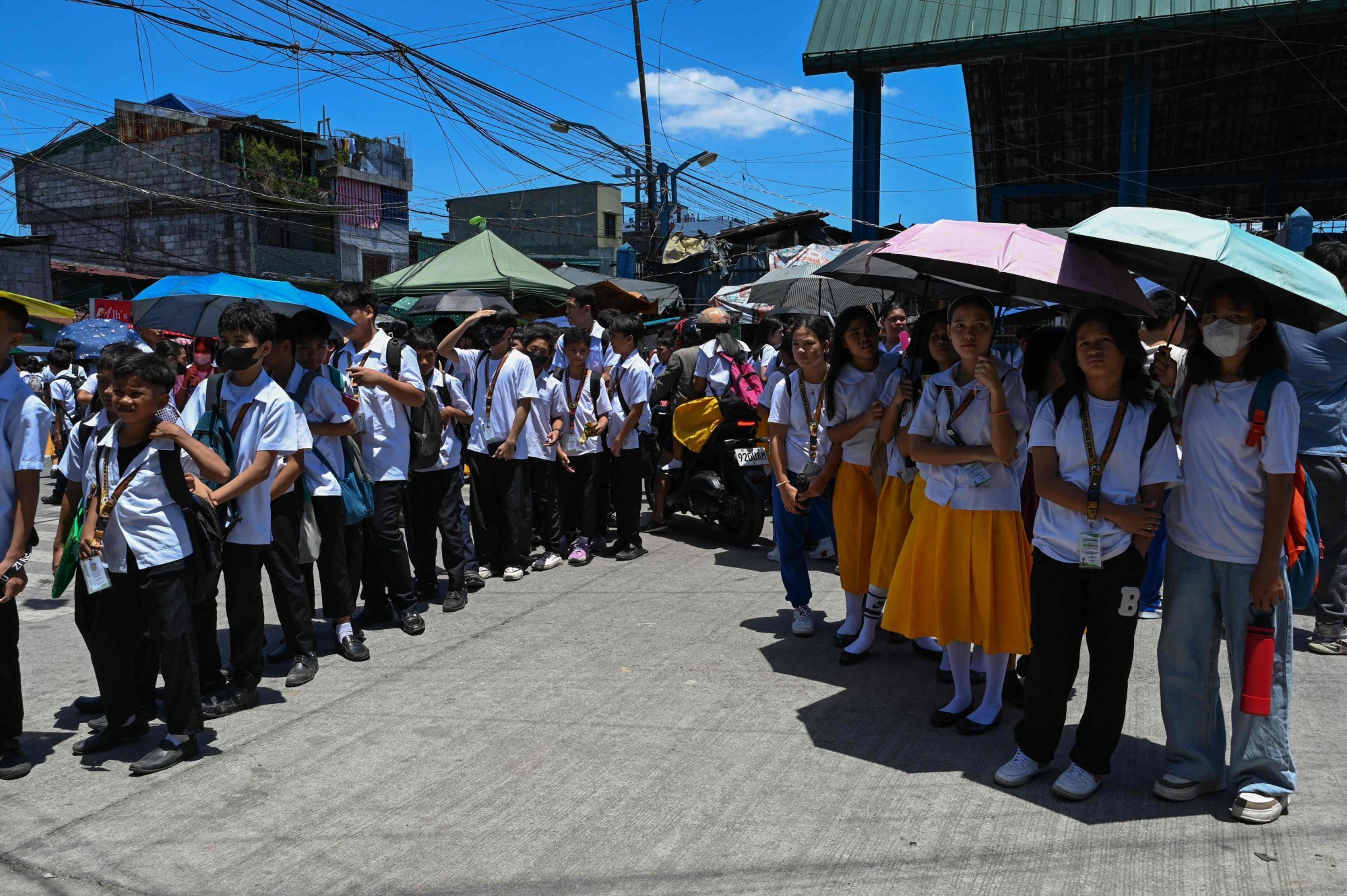The country’s heat index measures what a temperature feels like, taking into account humidity.
The index was expected to reach the “danger” level of 42 degrees Celsius in Manila on Tuesday and 43 degrees on Wednesday, with similar levels in a dozen other areas of the country, the state weather forecaster said.
The actual highest temperature forecast for the metropolis on Tuesday was 34 degrees.

Primary and secondary schools in Quezon, the most populous part of the city, were ordered to shut, while schools in other areas were given the option by local officials to shift to remote learning.
Some schools in Manila shortened class hours to avoid the hottest part of the day.
A heat index of between 42 and 51 degrees can cause heat cramps and heat exhaustion, with heatstroke “probable with continued exposure”, the weather forecaster said in an advisory.
Heat cramps and heat exhaustion are also possible at 33 to 41 degrees, according to the forecaster.

Local officials in several areas of the southern island of Mindanao also suspended in-person classes or shortened school hours over two weeks, regional education department spokeswoman Rea Halique said.
The orders affected hundreds of schools in the provinces of Cotabato, South Cotabato and Sultan Kudarat, as well as the cities of Cotabato, General Santos and Koronadal, Halique said.
Cotabato city experienced the highest heat index in Mindanao, reaching 42 degrees on Monday and Tuesday, the state forecaster reported.

